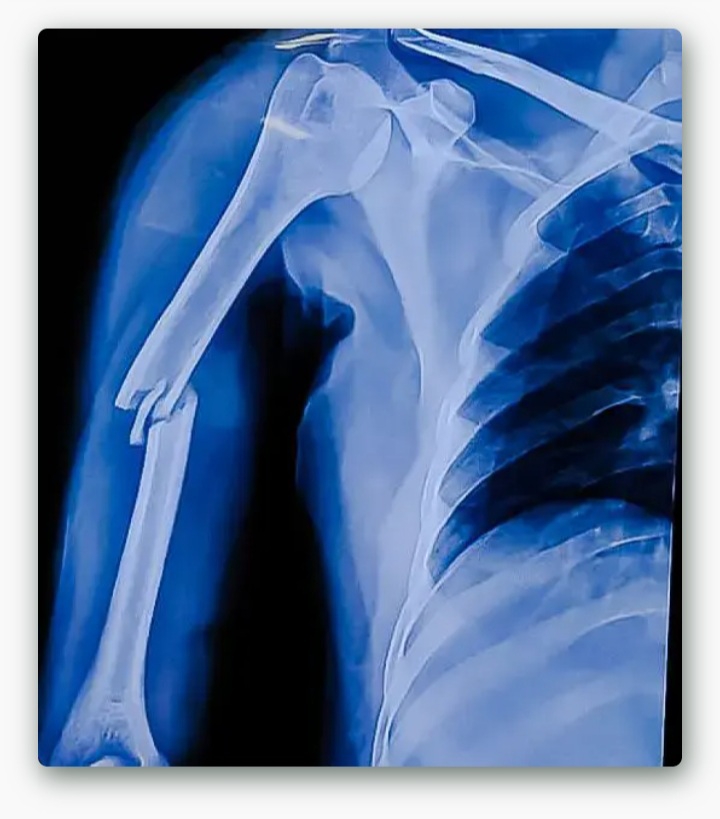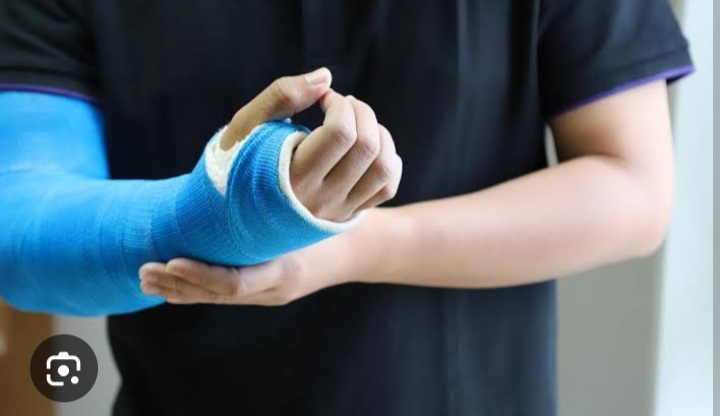On Health Society this morning, we learn more about Fractures/broken bones, what happens when bones get fractured??
We find more on this
What is Fracture??
A Fracture is a type of injury resulting in a crack or break in one or more bones. The bone may break in multiple directions, locations, and pieces, as well as be partially or completely broken.
Millions of people worldwide, from young children to older adults, are subject to broken bones. Though broken bones heal with time, it can take several months for a full recovery.
Broken bones are categorized by medical professionals based on physical characteristics and features seen on imaging tests. A broken bone or fracture may produce obvious, life-threatening symptoms or no symptoms at all, depending on the severity of the injury and the affected bone.
These categories of fractures include:
Closed and open fractures
A closed fracture is a type of broken bone that does not break through the skin upon injury, while an open fracture is a type of fracture where the bone penetrates through the skin and becomes exposed to the outer elements.
Approximately 1 in 120 people experience a broken bone with only 3 percent of these being an open fracture, otherwise known as a compound fracture.
Partial and complete fractures
Partial fractures are a type of broken bone that does not go all the way through the bone, whereas a complete fracture leaves the bone completely broken into at least two separate pieces, if not more.
Displaced fractures
When a displaced fracture occurs, the ends of the affected bone come out of alignment. As a result, the bone will not properly heal without the bone being reset by a licensed professional to ensure adequate blood flow, circulation, and feeling in the limb.
Stress fractures
Partial fractures are a type of broken bone that does not go all the way through the bone, whereas a complete fracture leaves the bone completely broken into at least two separate pieces, if not more.
Risk factors
Risk factors contributing to the risk of broken bones include:
Smoking
Smoking impacts hormone levels in a person and may even force women into early menopause. Because hormone levels are altered, the body is unable to adequately store necessary vitamins and minerals, leading to premature bone loss.
Heavy or frequent drinking
Smoking impacts hormone levels in a person and may even force women into early menopause. Because hormone levels are altered, the body is unable to adequately store necessary vitamins and minerals, leading to premature bone loss.
Use of steroids
Steroid use, like corticosteroids, frequently prescribed by physicians, compromises bone health when used long-term. Steroids are often used to treat inflammation within the body, especially in conditions like rheumatoid arthritis and chronic obstructive pulmonary disease (COPD). Though these medications alleviate symptoms of chronic conditions, they leave a person at an increased risk of bone loss.
Chronic medical conditions
Type 1 Diabetes, Celiac disease, Crohn's disease, and Rheumatoid arthritis affect the way a person’s GI tract absorbs and stores vital nutrients like calcium - a strong bone source. In addition, those suffering from these conditions rely heavily on steroid medications for relief.
Symptoms of broken bones
Many symptoms reported include:
Sudden, severe pain
An obvious, abnormal bend, bump, or twist
Difficulty using the affected limb
Tenderness
Swelling
Redness
Bruising
Unable to bear weight (often with a broken foot or leg)
An obvious deformity
A protruding bone (open fracture)
What are the common causes of fractures and broken bones?
When an amount of force is applied to a bone that is more than the bone can sustain, a fracture or broken bone occurs. Many things can cause a broken bone, and there are also many factors that may contribute to a loss of bone density that leaves a person more susceptible to a break.
The three most common causes of broken bones include:
Trauma
When extreme force is applied to a bone, a traumatic fracture or broken bone is likely to occur as the bone is met with more force than it can bear. Common types of trauma include falls, contact sports injuries like during football, hockey, or basketball, and car accidents.
Depending on the amount and direction of force, a traumatic fracture may be displaced, which requires immediate medical attention to decrease the risk of further damage.
Overuse
When extreme force is applied to a bone, a traumatic fracture or broken bone is likely to occur as the bone is met with more force than it can bear. Common types of trauma include falls, contact sports injuries like during football, hockey, or basketball, and car accidents. Depending on the amount and direction of force, a traumatic fracture may be displaced, which requires immediate medical attention to decrease the risk of further damage.
Osteoporosis
Osteoporosis is a disease that weakens the bones over time, making them easier to break. As this disease progresses, it leaves bones so weak and brittle that the simplest notion of coughing or bending over to retrieve something off of the ground can result in a fracture.
Information provided by:
Trauma Centre
Disclaimer: For medical advice, please consult your healthcare provider
Health Society, proudly brought to you by: Wolmaransstad Link










No comments:
Post a Comment